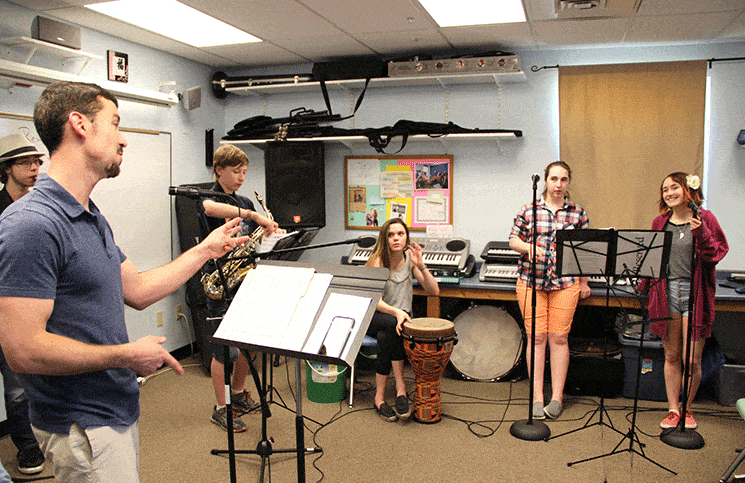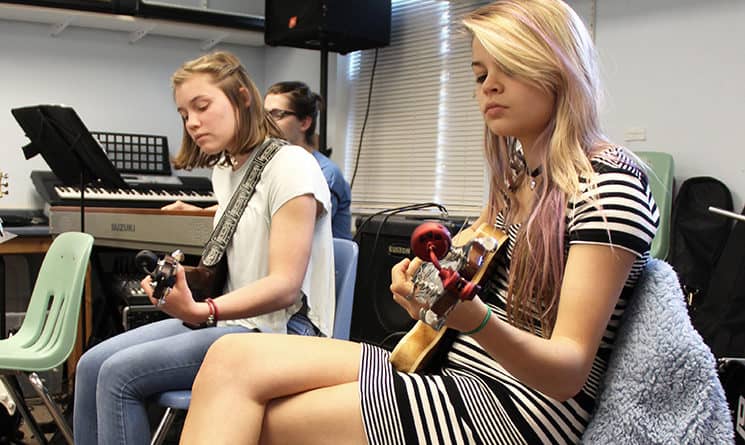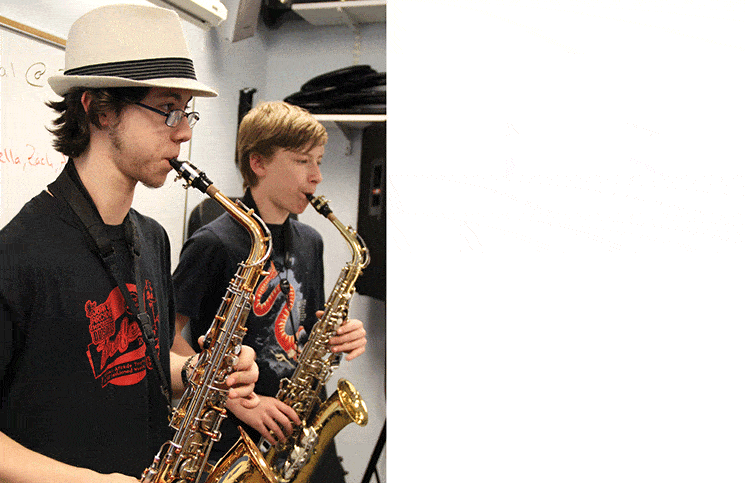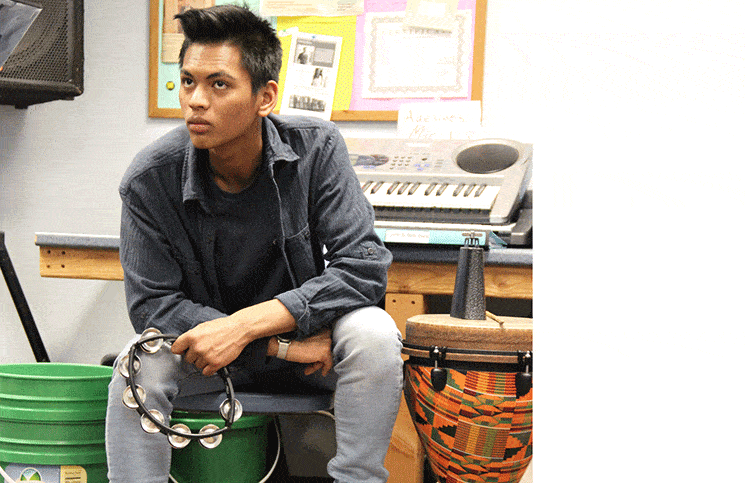The American high-school experience has been immortalized countless times in books and songs. A viewing of any one of John Hughes’ iconic movies shows the angst and contradiction of that particularly tricky phase of adolescence.
In most classrooms across the country, students have very little say in how the material is taught or how mastery of the lessons are measured. The social pressure is intense, and only those with spectacular luck manage to emerge unscathed.
For a group of 62 students in the Seacoast, however, high school is a vastly different experience. There are no lockers, teachers are viewed as friends instead of foes, and being in a rock band gets you credit toward graduation.
Welcome to the Cocheco Arts and Technology Academy (CATA). Established in 2004 and located just off the beaten path at the Seymour Osman Community Center in Dover, the public charter school is a haven for those who eschew the traditional public-school environment. With a heavy focus on visual and performing arts, CATA has become a magnet for students interested in pursuing a less standardized educational path.
“Students come here and stay here because they feel like they have a voice, they’re not just a number,” says James Friel, CATA’s director. “They are welcomed for who they are, instead of feeling pressured to conform. This group of young ladies and men are as open and nonjudgemental as 60-plus teenagers could be.”
A seasoned educator and administrator, Friel saw something special in CATA when he took the helm three years ago. “The more that I found out about the school, I realized this really is a place that is very unique and has a lot of character and potential.”
But Friel’s job is challenging. CATA’s shoestring budget imposes restrictions on operations, and stewarding the school’s growth under such limitations requires creative thinking from Friel, as well as CATA’s staff and board of directors. As the students begin to look forward to summer, the administration is hard at work fundraising to meet the goals of the annual fund. If the fundraising goal is hit by the target deadline, CATA will nab two matching donations offered by anonymous supporters. If not, the matching funds will be lost.
Classroom harmony
A typical day at CATA begins with morning circle, an opportunity for the kids to sit together as a group and discuss issues facing the school community.
“The students talk about things like being nonjudgmental and respecting each other on their own and without adult input. It’s not always perfect, but we work towards understanding and developing levels of tolerance,” says Friel.
In a room tightly packed with musical equipment and students, 10 teenagers practice the songs they’ll perform at an open showcase on May 20. Music teacher Eric Turner’s Jazz/Rock Band, one of the signature offerings in CATA’s mission-based curriculum, is warming up. The band opens with Amy Winehouse’s “Valerie” before moving on to “Agua de Beber,” a bossa-nova jazz standard, and then finishes up with Etta James’ “At Last.”
Turner skillfully leads the band, stopping the students every so often to fine-tune a note or give a student a pointer. Each student displays a level of mastery that is enviable, most on multiple instruments.
Turner believes much of the success of the Jazz/Rock Band program, which he developed, is in the flexibility allowed at CATA.
“The songs they’re playing — it’s all over the spectrum. Kids just don’t get that in a public-school setting,” he says. “Also, we focus on instruments that you might not find in a public-school band class.”

CATA music teacher Eric Turner (left) offers some pointers as the Jazz/Rock Band rehearses for a May 20 showcase.
The flexibility carries across all departments, according to Turner. “This school is much more of a problem-solving, skills-based program. Kids are given a curriculum, but within that curriculum, it’s up to them to figure out the best way to complete it,” he says. “Having choices empowers them.”
That sense of empowerment is almost tangible in the students. They are confident, poised, self-aware, and eager to share their opinions.
“CATA is about taking control of your education,” says a junior named Saren, whose long, lavender-streaked hair hangs over her face as she plays the bass. I think the biggest difference I notice is that the students, as well as the faculty, want to learn. Instead of dreading school every day, you want to go.”
Zachary, a fedora-wearing 10th-grader playing the saxophone, agrees. “I came because I wanted to be somewhere that I didn’t fall through the cracks,” he says. “Until you experience it yourself, you don’t realize how close everyone in a school environment, especially a high-school environment, can be. I came for the music, the community, and the teachers, and I’m really glad I did.”
“This is my first year here and I came to pursue music, which is my passion,” says Alex, a junior who plays guitar with a serious and intent focus. “It’s been a quality education.”
Future growth
As the school year draws to a close, the window of opportunity to take advantage of a matching donation looms for the administration and board. CATA’s annual fund goal is to raise $40,000 this school year. If they hit that number this spring, two private, anonymous donors have promised an additional $10,000.
“The goal of the annual fund is to cover the gap between state funding and what we need to fund the students’ education. We’re currently a little over halfway there,” says Friel. “Hitting that fundraising goal will ensure that everything, educationally, is taken care of. That’s the challenge for charter schools in general, because of the low level of funding we get from the state.”
He says the school also considers pursuing grants and corporate support. “We look at all opportunities,” he says. “We have a lot of energy on our board and they are, individually and as a board, looking at a variety of options and trying to find as many different opportunities as possible.”
Friel believes that as the school makes progress with its outreach and fundraising goals, there will be potential to grow significantly. “I would like to see us reaching and exceeding, with the state’s approval, what our charter was initially set to be,” he says.
But, with an expansion past the charter’s 100-student limit, new challenges would come.
“When we originally came here three years ago, it was understood to be a temporary arrangement and we still have a couple years left on that agreement,” says Friel. “I think we’ll max out this space if we hit 80 students. If we were to have a sudden influx of students, w



